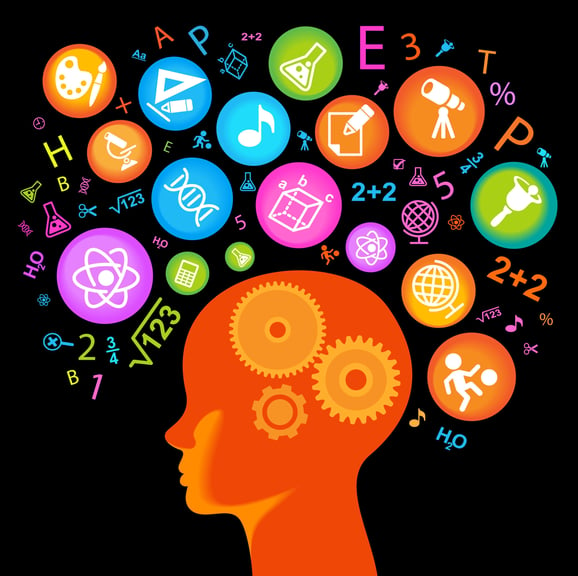
DESPITE A FLOOD of technology investment in the workplace in recent years, productivity gains are at their lowest since 1982. Economists are scratching their heads, trying to figure out why. In the past, technology improvements were followed by big productivity gains. Why not this time? A lot of us under the thumb of 24/7 technology know the answer to that one.
Digital overload. Too much technology has swamped the human capacity to deal with it. Instead of helping us get our jobs done, it’s making our work harder and longer.
THE QUAGMIRE OF UNBOUNDED TECHNOLOGY
It’s on display every time I conduct a work-life balance, stress management, or time management training, which I did last week at the Supply Chain Leaders in Action conference in Scottsdale, Arizona. Executives from Pepsi to Starbucks to Microsoft told me they were drowning in messaging and digital interruptions to the point they can’t keep up with it all and feel like they’re constantly falling behind.
One executive told me he feels a semblance of control if he can get his email box down to 200. A couple people in the training were getting more than 300 messages a day. That means doing email at home to catch up, which drives exhaustion, crowds out recovery options, and grinds down performance.
Technology is helpful when humans are in charge of it. Most of the time these days, we’re not. We’re at the mercy of unbounded in-boxes, information overload, and distractions.
How many of you have been known to sleep with your significant other who’s not your partner? Your smartphone. Based on my experiences, it’s well more than a few.
We have lost one of the most basic management tools: boundaries. The devices are running us, instead of the other way around. As a result, most people are in retaliatory mode all day, reacting to what’s coming at them—acting before they think. That drives time frenzy, crisis mentality, overwhelm, and poor time management, not to mention bad performance, because our chief productivity tool, attention, is under assault.
WHO'S IN CHARGE?
What we don’t understand about digital devices is that they are supposed to work for us, to help us, not barrage our working memory and survival equipment all day. We're supposed to be in charge.
All the bongs, chirps, chimes, and pulses play to what’s known as bottom-up attention. That’s what happens when you hear a loud noise. Your attention immediately shifts from whatever you were focused on to see what the threat is. It sets off the startle response, a stressor, interruptor, and all-around saboteur of working memory.
Intel estimated the cost of lost productivity per year due to email overload at $1 billion for a company with 50,000 workers. But it doesn’t have to be that way. We can put humans back in charge with a set of rules and guidelines that rein in the abuse.
A solution is long overdue. Gloria Mark at the University of California at Irvine says that 10 years ago, we used to shift between work spheres—online to offline and back again—every three minutes. Now it’s every 45 seconds. Her research shows that it takes an average of up to 25 minutes after answering an email for someone to get back to what they were doing before the interruption. We open a browser, talk to a colleague, and self-distract after an interruption.
BLOWING UP WORKING MEMORY
Interruptions throw us seriously off track. They do that by blowing up working memory, that fragile collection of germinal thoughts that we can hang on to for only a few seconds and that is at the heart of self-discipline and concentration. Research has shown that interruptions can slow us down by up to 27% and make everything we do seem more difficult than it is.
Interruptions can lower IQ up to 10 points. This is why we make suspect decisions under the influence of distractions.
Multitasking, which is really a misnomer (you can’t do two high cognitive tasks at one time), reduces productivity more than 40%, from all the switching back and forth that brain neurons have to do, according to research at the University of Michigan. And, of course, there are all the mistakes that come from multitasking, or what it really should be called—simultaneous inattention.
The problem is worse than we think, since we don’t understand the impact that unbounded devices and interruptions are having on our brains and self-regulatory equipment. Interruptions erode impulse control. The more you check email, the more you have to check it.
We are losing ability to regulate impulsivity. Without self-regulation, the discipline needed to avoid temptation and be able to focus, we’re backsliding into addictive behavior. As Gayle Porter at Rutgers found in her research, technology is as addicting as any substance.
EVERY EMAIL RESULTS IN SIX
In a poll at my Scottsdale training, the biggest distraction and time sink was email, which is growing at a rate of 25% a year. The volume is not sustainable. Every email results in six emails, three going, three coming back, as we try to tease out what someone is saying and find a polite way to exit the conversation. The good news is that we can do something about email, interruptions, and multitasking. We can create boundaries, rules of the digital road that restore control.
For instance, we can create manual checking schedules, which researchers have documented increase productivity and reduce chaos. We can make sure everyone knows that if something is an emergency, then that requires a phone call. This way people don't have to be checking email every five minutes for fear of missing an emergency.
Does your organization have an email or interruption management strategy? Our programs provide the tools to get the deluge under control, including an Email Etiquette Guidebook and Interruption Norms Rulebook.
Most organizations today are operating without norms and standards, which leads to digital abuse and triage mode all day.
Our productivity and time management training give your team the best practices vetted by the research to keep the productivity killer of unbounded technology at bay. When we develop new practices and norms and address bottlenecks, the chaos and stress ends, minds and working memory refocus, and more work gets done in less time.
Learn how to rein in information overload for your team. Click the button below for details on how our Work-Life Balance and Managing Crazy Busy Work time management trainings can make your organization less crazed and more effective.






